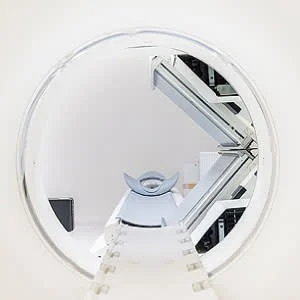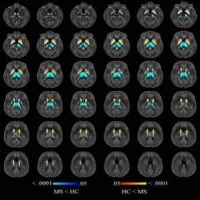Safety screening is an essential prerequisite to magnetic resonance imaging (MRI). Radiologist approval is often required to determine whether MRI can proceed safely in patients with medical and cosmetic devices or embedded foreign bodies. Although many sources of safety information are available online, MRI may be delayed or cancelled, especially after hours, when staffing is limited and the on-duty radiologist is unsure of a device’s MRI safety status.
To avoid this kind of problem and enhance patient care and safety, researchers created, based on existing institutional policy and procedure, a source of definitive safety determinations for commonly encountered devices that can be easily accessible to radiologists at the point of care.
"Many radiologists may be unsure about decisions regarding MR safety. A particular impediment to decision making is the relative inaccessibility of definitive, sufficiently specific, and unqualified recommendations," the researchers explain. "Information available from external sources (e.g., manufacturers, medical literature, the FDA, and the internet) often requires technical expertise to understand and implement."
For this study, an intranet-based library of implantable devices and foreign bodies was compiled. Information was sourced from ACR White Paper on MR Safety, manufacturer-specific recommendations, literature review, institutional policy and procedure documents, and local experts. This online resource was named “MR. Implant”. For each device, a summary page was created to succinctly convey its MR safety status and, where appropriate, outline steps for determining MR compatibility. MR. Implant is a searchable tool with multiple hyperlinked cross-referenced indices to facilitate accessibility.
This study was conducted at an academic tertiary care medical centre with an accredited diagnostic radiology residency programme, enrolling a total of 36 residents. Two unique multiple-choice tests were created to test radiology residents’ knowledge before and after launching MR. Implant. Residents were asked to make a safety determination by responding to true-or-false or multiple-choice answer options. Correct answers were based upon the device summary pages included in the MR. Implant library and were created by the same team who produced MR. Implant.
Residents were not aware of MR. Implant at the first testing session (it was released subsequently), and so could not use the site during the first session. For each question, participants were asked to indicate how confident they were with their safety determination using a Likert-type scale (range: 1 [not confident, would need to ask an expert or postpone MRI to the next day] to 5 [completely confident]).
Fifteen residents in postgraduate years 2 to 5 (median 3) completed tests both before and after the release of MR. Implant. The interval between tests was one year. After the release of MR. Implant, the researchers found a significant increase in both percentage of correct determinations and reported confidence. Accuracy (p < .01) increased from a mean of 54.7% (median 55; SD 9.3) to mean 71.7% (median 75; SD 18.0). Confidence (p < .001) increased from a mean of 2.8 (median 3; SD 0.7) to mean 3.7 (median 3.7; SD 0.7). In addition, 50 percent of residents identified MR. Implant as useful in completing the second test.
"The impact of MR. Implant is dependent on the awareness of and acceptance by radiologists and staff. We note anecdotally that despite the availability of MR. Implant, not all residents who participated in our study used the tool during the second test (after the release of MR. Implant)," the authors note. "Improved awareness and use of MR. Implant may even further enhance accuracy and confidence and, by extension, improve patient care."
To assess the efficacy of this tool more widely, the authors say a trial of MR. Implant at other institutions, both academic and community based, could be performed, but this would require careful review and approval to ensure its compliance with local policies.
Source: Journal of the American College of Radiology
Image Credit: Pixabay
References:
Fay JS et al. (2018) MR. Implant: Rapid Evidence-Based Determination of Implant Safety Status. J. Am. Coll. Radiol. In Press, Corrected Proof, Available online 19 April 2018. https://doi.org/10.1016/j.jacr.2018.02.029
Latest Articles
MRI, Medical Devices, implant safety
Safety screening is an essential prerequisite to magnetic resonance imaging (MRI). Radiologist approval is often required to determine whether MRI can proceed safely in patients with medical and cosmetic devices or embedded foreign bodies. Although many s










